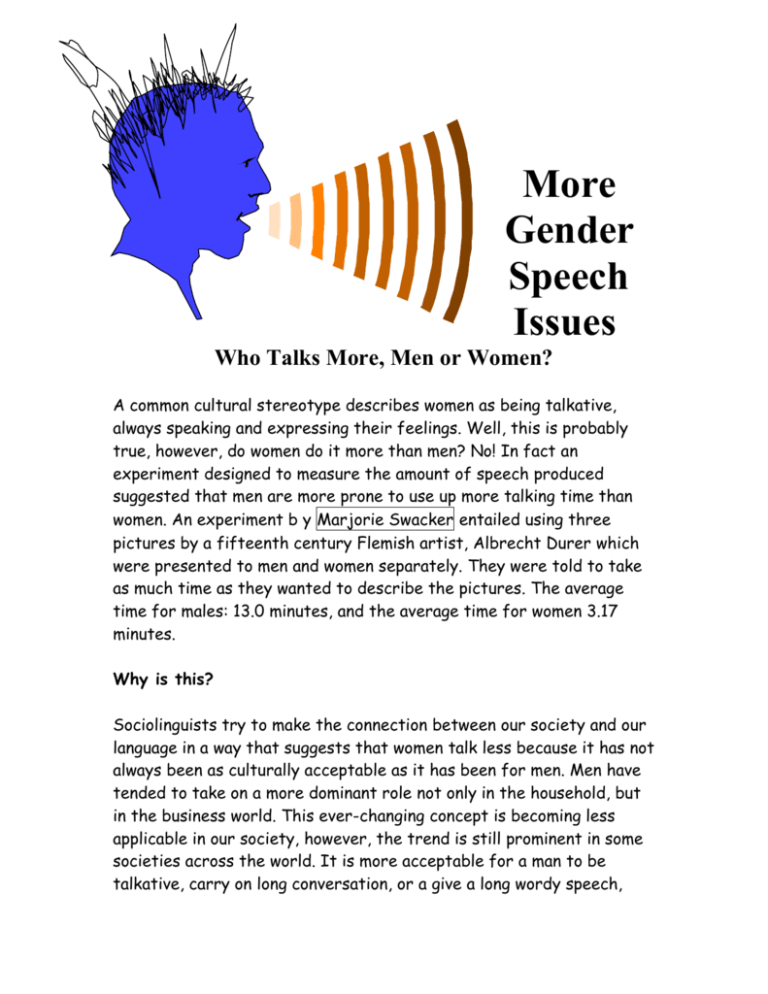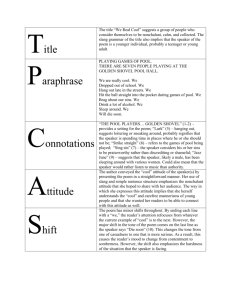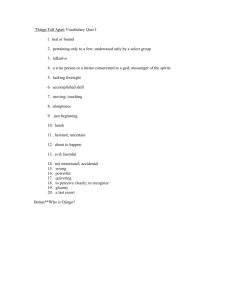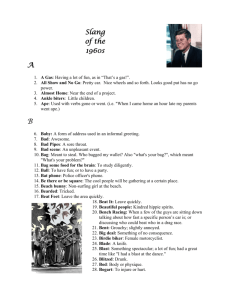More Gender Speech Issues
advertisement

More Gender Speech Issues Who Talks More, Men or Women? A common cultural stereotype describes women as being talkative, always speaking and expressing their feelings. Well, this is probably true, however, do women do it more than men? No! In fact an experiment designed to measure the amount of speech produced suggested that men are more prone to use up more talking time than women. An experiment b y Marjorie Swacker entailed using three pictures by a fifteenth century Flemish artist, Albrecht Durer which were presented to men and women separately. They were told to take as much time as they wanted to describe the pictures. The average time for males: 13.0 minutes, and the average time for women 3.17 minutes. Why is this? Sociolinguists try to make the connection between our society and our language in a way that suggests that women talk less because it has not always been as culturally acceptable as it has been for men. Men have tended to take on a more dominant role not only in the household, but in the business world. This ever-changing concept is becoming less applicable in our society, however, the trend is still prominent in some societies across the world. It is more acceptable for a man to be talkative, carry on long conversation, or a give a long wordy speech, however it is less acceptable for a women to do so. It has been more of a historical trend for men have more rights to talk. However , it is common for men to be more silent in situations that require them to express emotion. Since childhood, they have been told to "keep their cool" and "remain calm, be a man." Do Men and Women Really Speak Differently? Can you tell who, most likely, is speaking? "Wow what a beautiful home!" "That outfit looks lovely on you!" "Nice coat." "Where can I find a pair of shoes like that, I like them." "This is a super cool shirt, I love it." "This shirt is cool." Sometimes comments like these may be extremely stereotypical; however it is easy for any one to identify who the speaker is. In English we laugh at these utterances; however in some languages there are gender-exclusive speech patterns for men and women respectively. It is not uncommon to see these speech patterns cross-culturally to linguistically the gender of the speaker. Edward Sapir documented such occurrences in Yana, an American Indian language, where there are distinct words that are used for men and women respectively. Sapir found that the male form of speech is used by men when talking to other men. Female speech is used by women talking to other women or men, or by men talking to women. Therefore, there is an exclusive speech pattern for men speaking to men. Dr Geoff Barton’s Language & Gender Surgery is open at the weekends February 15, 2016
![Edward Sapir [1884-1939] - Frostburg State University](http://s2.studylib.net/store/data/005569801_1-deb1132f1ae8f0e8d561247b81673874-300x300.png)










